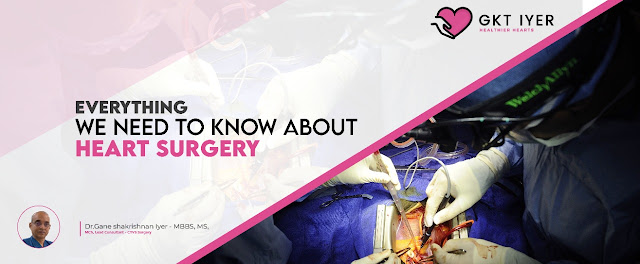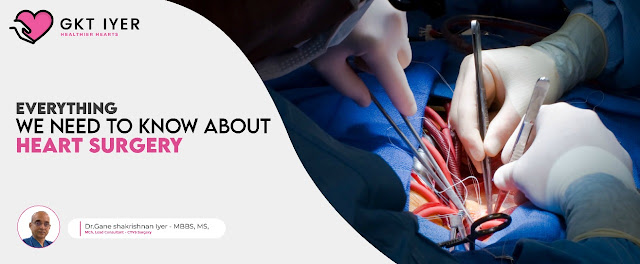Everything We Need To Know About Heart Surgery
A popular surgical procedure that is used on infants and adults to repair problems with the heart. Generally, the chest is cut open so as to reach the heart without opening up the arteries. Heart surgery can fix heart valve and artery defects flawlessly, restoring blood flow or even replacing a diseased heart. This process requires open-heart surgery, known to have its downsides and potentially devastating complications. Still to this day, some heart bypass surgery is being performed without making a big opening in the middle of the body.
Types and Reasons for
an Open Heart Surgery
·
The most common
type of heart surgery is coronary artery bypass graft (also known as open-heart
heart surgery). Coronary artery bypass is used to replace the diseased coronary
artery with a healthy artery or vein taken from the body in an effort to bypass
blocked arteries. The surgeon is performed on patients with coronary heart
disease to prevent heart attacks.
·
Another type of
surgery is the heart transplant that replaces the damaged or diseased heart
with a healthy one from a donor.
·
sometimes, having
medical devices implanted is very important to help the heart function
normally.
·
Maze procedure is
a procedure that is generally performed to treat irregular heartbeats. It is
also sometimes administered in conjunction with an operation of the heart such
as coronary artery bypass, valve repair etc.
·
Open heart surgery
can be performed on both children who experience defects at birth and adults
undergoing because of heart disease or valve problems.
·
High blood
pressure is known as an “Aneurysm” in which there is pulsing within the main
artery leaving the heart. The problem can also be treated by open-heart surgery
to correct the defect.
How is heart surgery
performed?
Preparations for the surgery
start the night before. The patient has to be prepared by eating dinner but not
after midnight. The doctors will administer general anesthesia before starting
the procedure so that the patient is asleep and devoid of any feeling during
the surgery. The surgeon will make a 5 to 10 incision in the chest with a
surgical blade, then use the same tool to cut through the breastbone which
exposes the heart and enables him to see his way around well enough.
During the surgery, a
heart-lung bypass machine is connected to the patient to supply oxygenated
blood to the brain and maxillofacial area leading to the overall recovery of
the patient. A healthy vein or artery will be used to create a new path through
the old blockage in the arteries such that blood can go through the new route
provided. In some cases, sterna plating is done with small titanium plates to
join the sterna bones in patients with a higher risk than others. The total
duration of hospital stay usually depends on the type of surgery, a patient's
health and medical history, and a patient’s physical condition.
Risks of an open-heart surgery
The risks of Bypass Surgery ofHeart include:
·
Heart attack or
stroke
·
Lung or kidney failure
·
Chest wound
infection
·
Irregular
heartbeat
·
Severe chest pain
·
Memory loss or
fuzziness
·
Blood clot or
blood loss
·
Breathing
difficulties
Recovery from open-heart surgery
The client is required to
remain in the ICU for some days. They are then moved to an open ward where
their health status remains stable enough for them to go home after 4-6 weeks
of additional care. A breathing tube was inserted by breathing experts to help
with the clients breathing for the rest of their life. A line administering pain
relief is inserted into a vein and they have constant monitoring from hospital
professionals.
The patient is responsible for
taking care to keep the incision clean and dry and avoid touching it with
unprotected hands. Hot water should not come into contact with the incision
line as it may indicate the site and hot soapy water can be used instead. The
incision site is regularly inspected to look for signs of infection like
reddish color, increased drainage or oozing from the incision site, fever, and/or warmth along the incision line. To get better results from the surgery,
a good night's sleep is important. Don’t forget to eat healthily and try to avoid
making alcoholic drinks before sleeping. Also, remember that taking the pain-killing medicine just about half an hour before sleeping works well for you.
Rehabilitation




Comments
Post a Comment